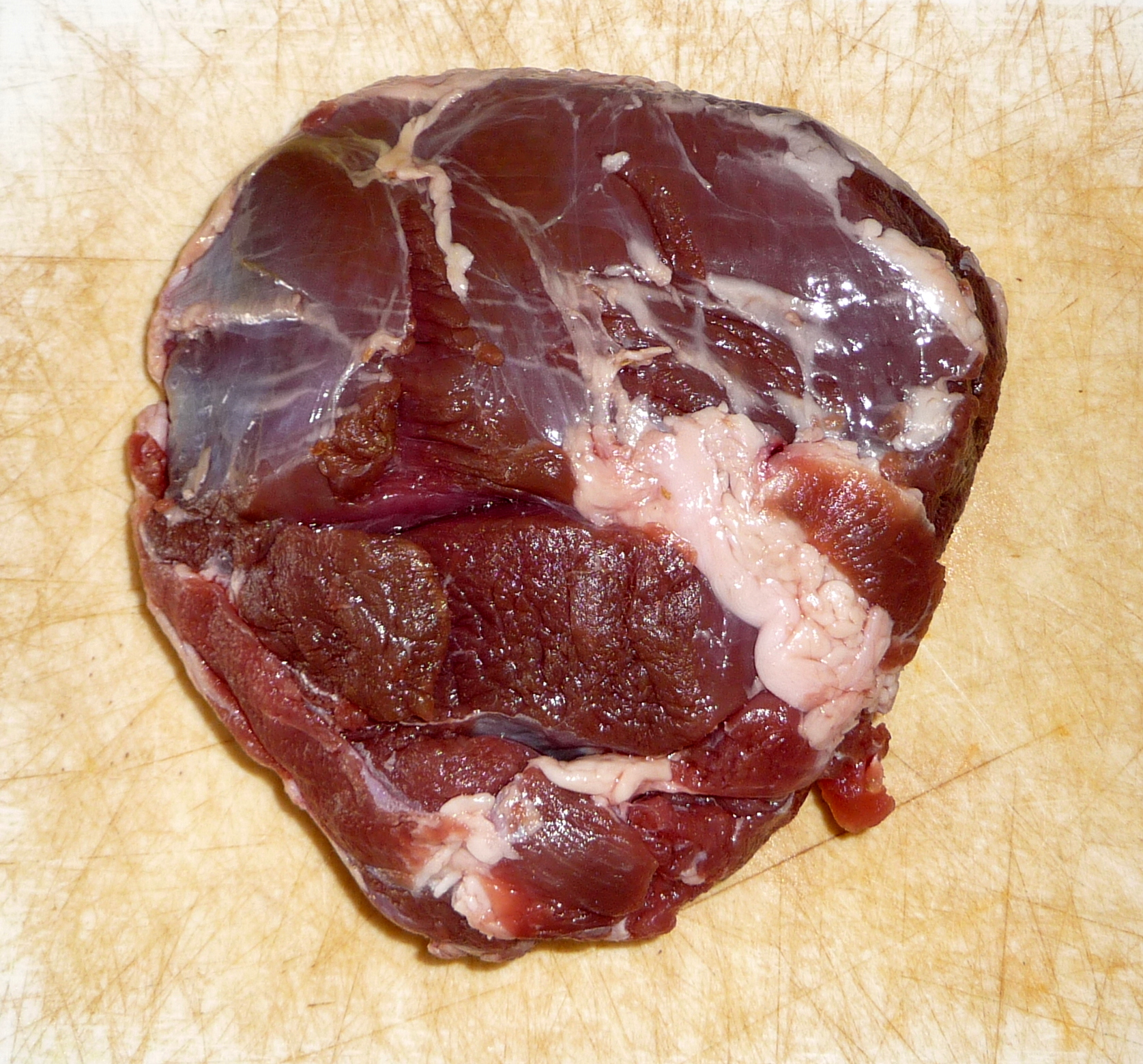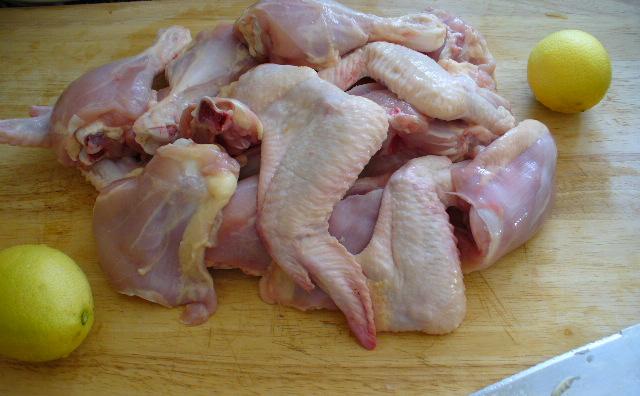Raw Lamb vs. Raw Chicken
Nutrition comparison of Raw Lamb and Raw Chicken
Ever wonder how your favorite foods stack up against each other in terms of nutrition?
We compared the nutritional contents of
raw lamb
versus
raw chicken
(100g each)
below using 2020 USDA and NIH data[1].
For a quick recap of significant nutrients and differences in raw lamb and raw chicken:
- Both raw chicken and raw lamb are high in calories, potassium and protein.
- Raw chicken has more Vitamin B6, however, raw lamb contains more folate and Vitamin B12.
USDA sources for nutritional information: Raw Lamb (Lamb, ground, raw) and Raw Chicken (Chicken, ground, raw) . Have a correction or suggestions? Shoot us an email.
Calories and Carbs
calories
Both raw chicken and raw lamb are high in calories. Raw lamb has 97% more calories than raw chicken - raw chicken has 143 calories per 100 grams and raw lamb has 282 calories.
For macronutrient ratios, raw lamb is much lighter in protein, much heavier in fat and similar to raw chicken for carbs. Raw lamb has a macronutrient ratio of 24:0:76 and for raw chicken, 49:0:51 for protein, carbohydrates and fat from calories.
Macro Ratios from Calories:
| Raw Lamb | Raw Chicken | |
|---|---|---|
| Protein | 24% | 49% |
| Carbohydrates | ~ | ~ |
| Fat | 76% | 51% |
| Alcohol | ~ | ~ |
carbohydrates
Both raw chicken and raw lamb are low in carbohydrates - raw chicken has 0.04g of total carbs per 100 grams and raw lamb does not contain significant amounts.
Protein
protein
Both raw chicken and raw lamb are high in protein. Raw chicken has a little more protein (5%) than raw lamb by weight - raw chicken has 17.4g of protein per 100 grams and raw lamb has 16.6g of protein.
Fat
saturated fat
Raw lamb is high in saturated fat and raw chicken has 77% less saturated fat than raw lamb - raw chicken has 2.3g of saturated fat per 100 grams and raw lamb has 10.2g of saturated fat.
trans fat
Both raw chicken and raw lamb are low in trans fat - raw chicken has 0.07g of trans fat per 100 grams and raw lamb does not contain significant amounts.
cholesterol
Raw chicken and raw lamb contain similar amounts of cholesterol - raw chicken has 86mg of cholesterol per 100 grams and raw lamb has 73mg of cholesterol.
Vitamins
Vitamin D
Raw lamb and raw chicken contain similar amounts of Vitamin D - raw lamb has 2iu of Vitamin D per 100 grams and raw chicken does not contain significant amounts.
Vitamin E
Raw chicken and raw lamb contain similar amounts of Vitamin E - raw chicken has 0.27mg of Vitamin E per 100 grams and raw lamb has 0.2mg of Vitamin E.
Vitamin K
Raw chicken and raw lamb contain similar amounts of Vitamin K - raw chicken has 0.8ug of Vitamin K per 100 grams and raw lamb has 3.6ug of Vitamin K.
The B Vitamins
Raw chicken has more Vitamin B6, however, raw lamb contains more folate and Vitamin B12. Both raw lamb and raw chicken contain significant amounts of thiamin, riboflavin, niacin and pantothenic acid.
| Raw Lamb | Raw Chicken | |
|---|---|---|
| Thiamin | 0.11 MG | 0.109 MG |
| Riboflavin | 0.21 MG | 0.241 MG |
| Niacin | 5.96 MG | 5.575 MG |
| Pantothenic acid | 0.65 MG | 1.092 MG |
| Vitamin B6 | 0.13 MG | 0.512 MG |
| Folate | 18 UG | 1 UG |
| Vitamin B12 | 2.31 UG | 0.56 UG |
Minerals
calcium
Raw lamb has 167% more calcium than raw chicken - raw chicken has 6mg of calcium per 100 grams and raw lamb has 16mg of calcium.
iron
Raw lamb has 89% more iron than raw chicken - raw chicken has 0.82mg of iron per 100 grams and raw lamb has 1.6mg of iron.
potassium
Both raw chicken and raw lamb are high in potassium. Raw chicken has 135% more potassium than raw lamb - raw chicken has 522mg of potassium per 100 grams and raw lamb has 222mg of potassium.
Omega-3 and Omega-6
omega 3s
For omega-3 fatty acids, raw lamb has more alpha linoleic acid (ALA) than raw chicken per 100 grams, however, raw chicken contains more dha than raw lamb per 100 grams.
| Raw Lamb | Raw Chicken | |
|---|---|---|
| alpha linoleic acid | 0.42 G | 0.071 G |
| DHA | ~ | 0.023 G |
| EPA | ~ | 0.008 G |
| DPA | ~ | 0.008 G |
| Total | 0.42 G | 0.11 G |
omega 6s
Comparing omega-6 fatty acids, both raw lamb and raw chicken contain significant amounts of linoleic acid.
| Raw Lamb | Raw Chicken | |
|---|---|---|
| linoleic acid | 1.36 G | 1.324 G |
| other omega 6 | ~ | 0.014 G |
| Total | 1.36 G | 1.338 G |
Customize your serving size
The comparison below is by common portions, e.g. cups, packages. You can also see a more concrete comparison by weight at equal weight (by grams) comparison.
Note: The specific food items compared are: Raw Lamb (Lamb, ground, raw) and Raw Chicken (Chicken, ground, raw) .
Raw Lamb g
()
|
Daily Values (%) |
Raw Chicken g
()
|
|||||
|---|---|---|---|---|---|---|---|
| KCAL % |
|
5% | calories | 5% |
|
KCAL % | |
| G % |
|
5% | carbohydrates | 5% |
|
G % | |
| G % |
|
5% | dietary fiber | 5% |
|
G % | |
| G | 5% | sugar | 5% | G | |||
| G % |
|
5% | total fat | 5% |
|
G % | |
| G % |
|
5% | saturated fat | 5% |
|
G % | |
| G | 5% | monounsaturated fat | 5% | G | |||
| G | 5% | polyunsaturated fat | 5% | G | |||
| G | 5% | trans fat | 5% | G | |||
| MG | 5% | cholesterol | 5% | MG | |||
| MG % |
|
5% | sodium | 5% |
|
MG % | |
| 5% | Vitamins and Minerals | 5% | |||||
| UG % |
|
5% | Vitamin A | 5% |
|
UG % | |
| MG % |
|
5% | Vitamin C | 5% |
|
MG % | |
| IU % |
|
5% | Vitamin D | 5% |
|
IU % | |
| MG % |
|
5% | calcium | 5% |
|
MG % | |
| MG % |
|
5% | iron | 5% |
|
MG % | |
| MG % |
|
5% | magnesium | 5% |
|
MG % | |
| MG % |
|
5% | potassium | 5% |
|
MG % | |
| MG % |
|
5% | thiamin (Vit B1) | 5% |
|
MG % | |
| MG % |
|
5% | riboflavin (Vit B2) | 5% |
|
MG % | |
| MG % |
|
5% | niacin (Vit B3) | 5% |
|
MG % | |
| MG % |
|
5% | Vitamin B6 | 5% |
|
MG % | |
| MG % |
|
5% | pantothenic acid (Vit B5) | 5% |
|
MG % | |
| UG % |
|
5% | folate (Vit B9) | 5% |
|
UG % | |
| UG % |
|
5% | Vitamin B12 | 5% |
|
UG % | |
| MG % |
|
5% | Vitamin E | 5% |
|
MG % | |
| UG % |
|
5% | Vitamin K | 5% |
|
UG % | |
| G % |
|
5% | protein | 5% |
|
G % | |
| UG % |
|
5% | biotin (Vit B7) | 5% |
|
UG % | |
| MG % |
|
5% | choline | 5% |
|
MG % | |
| MG % |
|
5% | chlorine | 5% |
|
MG % | |
| UG % |
|
5% | chromium | 5% |
|
UG % | |
| MG % |
|
5% | copper | 5% |
|
MG % | |
| UG % |
|
5% | fluoride | 5% |
|
UG % | |
| UG % |
|
5% | iodine | 5% |
|
UG % | |
| MG % |
|
5% | manganese | 5% |
|
MG % | |
| UG % |
|
5% | molybdenum | 5% |
|
UG % | |
| MG % |
|
5% | phosphorus | 5% |
|
MG % | |
| UG % |
|
5% | selenium | 5% |
|
UG % | |
| MG % |
|
5% | zinc | 5% |
|
MG % | |
| G | 5% | Water | 5% | G | |||
| G | 5% | Starch | 5% | G | |||
| G | 5% | Alcohol | 5% | G | |||
FAQ
Does raw chicken or raw lamb contain more calories in 100 grams?Both raw chicken and raw lamb are high in calories. Raw lamb has 100% more calories than raw chicken - raw chicken has 143 calories in 100g and raw lamb has 282 calories.
Is raw chicken or raw lamb better for protein?
Both raw chicken and raw lamb are high in protein. Raw chicken has a little more protein ( 10%) than raw lamb by weight - raw chicken has 17.4g of protein per 100 grams and raw lamb has 16.6g of protein.
Does raw chicken or raw lamb contain more potassium?
Both raw chicken and raw lamb are high in potassium. Raw chicken has 140% more potassium than raw lamb - raw chicken has 522mg of potassium in 100 grams and raw lamb has 222mg of potassium.

